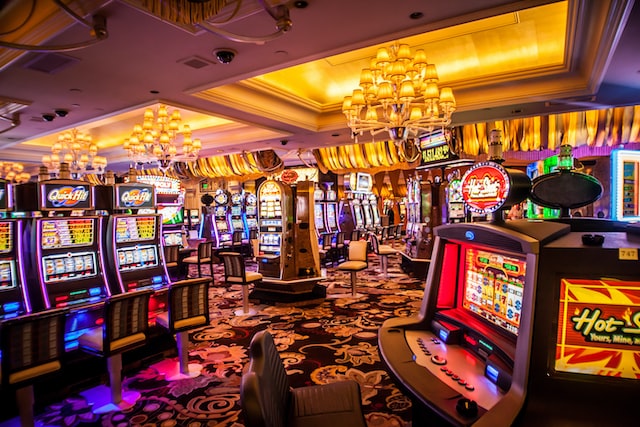
Casino games have long captivated the human imagination, drawing players into a universe filled with fortune, strategy, and the allure of adventure. Each experience is carefully crafted not just for enjoyment, but also to elicit particular emotional responses that keep gamblers immersed and invested. Understanding the reasons behind these designs reveals much about how behavioral psychology plays a key role in the gaming experience.
From the vivid lights and vibrant sounds to the complex layering of rules and incentives, casino games are designed to create an atmosphere of thrill and anticipation. Game designers leverage psychological principles to influence participant behavior, whether through the use of jackpots, close-call situations, or community engagement. By examining these aspects, we can better appreciate how casino games fulfill not just a need for entertainment, but deeper psychological needs for excitement and uncertainty.
Grasping Player Behavior
Casino games are engineered with a profound comprehension of player psychology, which is crucial for drawing in and keeping players. The rush of the game, coupled with the anticipation of winning, produces a powerful allure. Game designers make use of elements like audio cues, colorful graphics, and engaging gameplay to capture attention and evoke emotional responses. https://tumbet708.com/ These sensory experiences enhance the immersive experience, making players feel more invested in the game.
Another notable aspect of player behavior is the idea of risk versus reward. Casino games often manage high-stakes situations with the potential for considerable rewards, which can lead to the phenomenon known as near-miss effect. When players come near to winning, the brain releases dopamine, reinforcing their behavior and encouraging them to persist playing in search of that hard-to-reach win. This cycle of hope and disappointment plays a key role in how games are structured and advertised.
Lastly, community aspects also play a critical role in player behavior at casinos. Many games are crafted to be played in teams or in company with other players, fostering a sense of belonging and collective experience. The community engagement inherent in games like poker enhances enjoyment and can culminate in longer play sessions. Designers capitalize on this by designing environments that prompt players to stay, interact, and revisit, making the overall casino experience more attractive.
The Role of Visuals and Audio
Visuals and audio play a vital role in improving the player’s experience within casino games. Designers utilize bright colors, striking graphics, and captivating animations to capture players’ attention and sustain their interest. The use of motifs, such as exploration or opulence, helps create an immersive atmosphere that transports players into another world. By appealing to the senses, these elements contribute to a intensified emotional response, prompting players to engage more deeply with the games.
Sound design is equally important in enhancing the overall experience of gambling games. The combination of ambient music, audio effects for winning combinations, and environmental noises creates an sound landscape that holds players enthralled. Audio cues associated with wins, such as ringing bells or festive music, evoke feelings of thrill and satisfaction, prompting players to continue playing. These sound cues are strategically placed to enhance the excitement of the game and create a more immersive experience.
Additionally, the alignment of imagery and audio is important for supporting the game’s overall concept and mood. Each element should coordinate harmoniously to create a cohesive experience that draws players in. The effective use of this synergy not only improves user enjoyment but also increases the likelihood of repeat play, as players become more invested in the captivating world that the casino games offer. This thoughtful integration of imagery and audio ultimately enhances player involvement and loyalty.
Reward Systems and Engagement
The creation of gambling games greatly relies on reward systems to ensure players engaged and coming back for more. These systems are based in behavioral theories that take advantage of human behavior and desire. Players are often motivated by the thrill of success, which is supported by immediate feedback through the game structure’s design. This instant gratification not only improves the gaming experience but also fosters a sense of success, prompting participants to keep playing in hopes of bigger rewards.
Gaming establishments adopt various incentive systems, such as large payouts, bonuses, and increased rewards, to captivate participants. These features create a level of thrill that sustains engagement. Additionally, the unpredictability of outcomes plays a crucial role in sustaining interest. The variable reward system, where successes are unpredictable but happen often enough, keeps players on edge and driven to continue participating. This cycle of anticipation and anticipation is essential to the effectiveness of casino games.
Furthermore, community aspects, such as competitive events and multiplayer features, enhance the participation factor by tapping into the desire to compete of participants. The shared experience of playing with others can amplify the thrill of success and create a sense of community within the gaming space. By combining these social dynamics with effective reward systems, gambling experiences not only provide fun but also nurture a stronger bond among participants, reinforcing their commitment to the overall experience.
